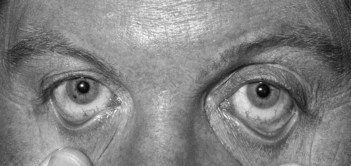119 Splenomegaly
Salient features
History
• Night sweats, low-grade fever: from hypermetabolic state caused by overproduction of white blood cells in chronic myeloid leukaemia
• Abdominal fullness: from splenomegaly
• Bleeding, bone pain: bone marrow infiltration in myeloproliferative disorders
• History of residence in endemic areas of malaria, kala-azar
• Family history of Gaucher’s disease
• History of fever (infectious mononucleosis, infective endocarditis)
• Blurred vision, respiratory distress, priapism (from leukostasis in chronic myeloid leukaemia)
• Occasionally transverse myelitis (from myelopoiesis in epidural space).
Examination
• Massive spleen. There may be associated anaemia.
• Start low while examining for the spleen and be gentle during palpation. Even if you are certain it is the spleen, you must go through the motions of ruling out a palpable kidney: do a bimanual palpation and check for ballottement; feel for the splenic notch; auscultate for splenic rub.
• Look for enlarged lymph nodes and anaemia.
• Remember that the spleen must be at least two or three times its usual size before it can be felt.
• Remember that the spleen normally does not extend beyond the anterior axillary line and lies along the 9th, 10th and 11th ribs. The spleen percussion sign is a useful diagnostic technique (Ann Intern Med 1967;67:1265).
Stay updated, free articles. Join our Telegram channel

Full access? Get Clinical Tree



